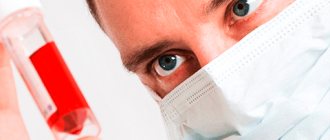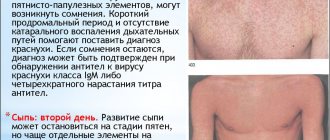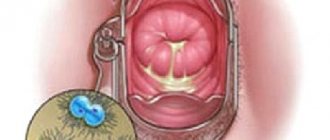Quick transition Treatment of rubella
Rubella is an infection that mainly affects the skin and lymph nodes.
The disease is caused by the rubella virus (for a long time it was believed that rubella was a mild variant of measles, but later science learned to distinguish between these diseases), transmitted by airborne droplets, through particles of saliva of a sick person sneezing. In addition, the rubella virus can be transmitted transplacentally, that is, from a pregnant woman to the fetus.
Rubella is usually quite mild and rarely causes complications, although rubella encephalitis and even fatal cases occur. The main medical danger of rubella is infection of pregnant women, since the rubella virus can cause congenital rubella syndrome in the fetus.
Before the rubella vaccine became available in 1969, epidemics of the disease occurred every 6–9 years, usually among children aged 5–9 years, along with many cases of congenital rubella (that is, deafness, heart defects, and other physical defects in newborn children whose mothers had rubella during pregnancy). Thanks to mass immunization, cases of rubella and congenital rubella syndrome have become incomparably smaller.
Most cases of rubella now occur not in children, but in young, unvaccinated adults.
Causes
The source of infection is a person with rubella. Rubella viruses are released into the environment along with microparticles of mucus from the nasopharynx and sputum. Most often, infection occurs through direct contact with a carrier of the virus.
Among the main routes of infection:
- contact (through contact with infectious material);
- intrauterine path (through the circulatory system from mother to fetus);
- airborne route.
The incubation period of infection is quite long. On average it is 2-3 weeks. But others can become infected from a sick person only during a certain period of time: seven days before the first symptoms appear and about 5 days after they pass.
The human body's susceptibility to rubella is extremely high - in most cases it is 100% (we are talking about unvaccinated people who have not encountered the virus before). People who have previously had rubella develop strong immunity, so re-infection is excluded.
Rubella affects the greatest number of people in winter and early spring - at this time the virus is most aggressive. This is due to favorable weather conditions, a sharp change in air temperature and a massive decrease in immunity.
In the typical course of rubella, an infected person begins to shed pathogens 7-10 days before the rash appears. Viruses are most intensively released from the patient’s body in the first five days of the rash period. The release of pathogens stops after two to three weeks from the onset of the rash.
In inapparent and atypical forms of rubella, pathogens are released from the body of an infected person less intensely and over a shorter period of time. However, these forms of rubella pose the greatest epidemiological danger, since they occur in adults several times more often than the typical course of the disease and usually remain unrecognized.
Children with congenital rubella also pose a significant epidemiological danger. With congenital rubella, viruses are contained not only in mucus from the nasopharynx and sputum, but also in urine and feces. They can be released into the environment for 1.5-2 years.
The main mechanism of spread of rubella is airborne. Infection can also occur through contact and household contact (much less often, mainly in children's groups (through toys). It does not have significant epidemiological significance.
Most often, preschool children, schoolchildren, adolescents and socially active adults suffer from rubella. Children aged two to nine years are most often affected. During the first two to three years of life, children, as a rule, do not yet attend preschool institutions, so their risks of infection and disease are several times lower compared to children of senior preschool and primary school age. Most adolescents and adults are immune to rubella because they acquired the infection in childhood.
Children born to mothers who have specific immunity are also temporarily immune to rubella in the first six months of life.
The main targets for the rubella virus are the structures of the lymphatic system, skin, mucous membranes of the respiratory tract, synovial tissue of the joints, and during pregnancy, the placenta and fetal tissues.
Features of the rash
Even before the rash appears on the face and torso in children infected with rubella, one can observe bright pink specks in the mouth, which gradually merge into dark red spots.
Skin rashes begin to appear on the face, namely its lower part: in the ears, nasolabial area and on the cheeks. A day later, the rash begins to spread over the child’s body. The most pronounced spots of the rash appear on the buttocks, shoulders, elbows and knees. The approximate location of the rash on the body is shown in the photo below (under the letter “b”).
At the same time, the rashes are never localized in children in the groin, on the feet and palms, which distinguishes rubella from other diseases.
Symptoms and signs
After entering the human body, the rubella virus goes into short-term hibernation. It begins to actively attack the immune system in the first days after the rash appears. In adults, the first symptoms resemble a mild cold.
During the incubation period, the rubella virus penetrates the mucous membranes of the body and attaches to their surface. Soon after this, it also settles in the submucosal tissues. The virus then quickly spreads through the lymphatic system. There is a significant increase in the cervical lymph nodes; when they are palpated, the patient experiences pain.
From this moment, the disease enters a prodromal period, the duration of which ranges from several hours to two days. The incubation period ends with the appearance of rashes.
The characteristic rash is the first and key sign of rubella. It first appears on the skin of the face and behind the ears. Subsequently, the rashes spread to the scalp, after which they affect the entire surface of the body. Elements of the rash may also occur in a different sequence.
The rashes have a round or oval shape. Their color varies from pink to red. The size of each speck is from 2 to 3 millimeters. The rash does not rise above the skin and looks more like stains from spilled paint. Upon manual examination, the rash appears smooth to the touch.
In some cases, rubella is accompanied by a confluent rash. In this case, solid red fields appear on the body. Because of this symptom, the disease can be difficult to distinguish from scarlet fever or measles, which can subsequently lead to a false diagnosis.
But there is a visible difference: with confluent rashes, the patient’s face and body look the same as with measles, while the limbs are covered with a rash that is similar to scarlet fever. It is important to know that the rash with rubella is slightly larger in diameter than with scarlet fever, and slightly smaller than with measles.
In adults, rashes are more pronounced than in children. They completely cover the body, with the spots being as close to each other as possible. Often they combine into one large spot. Entire erythematous areas may appear on the skin of the back and buttocks.
In some patients, rubella passes without a rash, with weak or moderate manifestations of intoxication and catarrhal syndromes (atypical course). According to some data, rubella without a rash occurs in 30-50% of patients, according to others, this is a very rare form of the disease, and more often such a diagnosis is the result of an insufficiently thorough examination of the patient.
The course of rubella in children and adults, including pregnant women, is not significantly different. Asymptomatic forms of rubella are recorded in adults more often than in children. The condition of children changes a day before the rash appears. They are capricious a lot, get tired quickly, and may complain of discomfort and general malaise.
In children, rubella can occur in completely different ways:
- with the presence of rash and fever;
- exclusively with a rash;
- with the simultaneous presence of rash, fever and catarrhal symptoms.
In childhood, severe forms of rubella and moderate rubella are diagnosed 10 times less often than in adult patients.
One of the first symptoms of the virus is damage to the mucous membrane of the nasopharynx. In combination with the rash or long before it, enanthema appears on the mucous membrane - a dermatous change in the form of pale pink spots. This phenomenon is also called Forxheimer's spots. In children, this symptom is usually mild.
With rubella, the patient is accompanied for some time by an elevated body temperature (no more than 38 degrees Celsius). It indicates two things at once: the inflammatory process in the body and the fight of the immune system against infection. There is no need to artificially lower the temperature if it does not rise above 38.5 degrees.
Rubella is invariably accompanied by a deterioration in general health. The patient is concerned about the standard manifestations of an infectious disease:
- malaise;
- headache;
- weakness;
- drowsiness;
- body aches.
In some cases, changes appear in the blood test - slight leukopenia and lymphocytosis may occur.
Rubella can also manifest itself in an atypical (erased) form. The patient is not bothered by the rash or other manifestations of intoxication. The only symptoms are a sore throat and fever. Due to its uncharacteristic symptoms, the erased form of rubella is often confused with a sore throat or acute respiratory infection. In this case, the disease can only be detected using laboratory tests.
Despite the absence of a rash, a patient with atypical rubella still spreads the virus. This is the most common cause of epidemics and outbreaks of infection in groups.
Rubella in pregnant women: symptoms of congenital rubella
Rubella is especially dangerous for pregnant women. It often leads to catastrophic events:
- frozen pregnancy;
- miscarriages;
- stillbirth;
- formation of fetal development pathologies.
The virus most threatens a pregnant woman and child in the first trimester of pregnancy. It enters the fetus through the placenta. After this, it gradually affects all tissues and organs that are just beginning to form, which leads to their improper development.
The degree of damage to the fetus depends on the form in which the disease occurs. Often a woman can only be bothered by catarrhal manifestations: runny nose, sneezing, lacrimation. But the fetus may suffer much more at this time. Therefore, any symptoms during pregnancy, even the most minor ones, are a reason to consult a doctor and get the necessary tests.
The shorter the pregnancy, the greater the likelihood of serious complications. For example, at 3-4 weeks it is 58-62%, and at 14-15 it is already 8%. The nervous system of the fetus most often suffers: hearing, vision, conditioned reflexes. Congenital heart defects, underdevelopment and diseases of the gastrointestinal tract often occur.
At 9-12 weeks from the moment of conception, rubella can lead to the most terrible consequences. As a rule, during this period it entails miscarriage or intrauterine fetal death. Even if the pregnancy can be maintained, the possibility of its normal course in the future is almost excluded.
In the last weeks of pregnancy, the baby’s organs are already fully formed, therefore, the rubella virus does not pose such a serious danger to his life and health.
Depending on which organs and systems of the fetus were affected by rubella viruses, congenital rubella syndrome can clinically manifest itself as disorders from:
- hearing organs - complete or partial, uni- or bilateral deafness, and deafness may not appear immediately, but several years after birth;
- organs of vision - one- or two-sided cataracts, microphthalmia, glaucoma, chorioretinitis, pigmentary retinopathy;
- heart - pulmonary artery stenosis, aortic valve defects, atrial or ventricular septal defect, ductus arteriosus disease;
- musculoskeletal system - open anterior source, osteoporosis of tubular bones, joint diseases;
- nervous system - microcephaly, meningoencephalitis, impaired consciousness, diseases of the language apparatus and psychomotor reactions, mental retardation, convulsive syndrome;
- endocrine system - diabetes mellitus and diabetes insipidus, hypothyroidism, thyroiditis, growth hormone deficiency;
- genitourinary system - cryptorchidism, hydrocele, cereal buds, prostate diseases;
- gastrointestinal tract and abdominal organs - pyloric stenosis, hepatitis, hepatosplenomegaly.
In addition to the listed disorders, characteristic signs of congenital rubella syndrome are low birth weight of the child, thrombocytopenic purpura, hemolytic anemia, interstitial pneumonia, inguinal hernia, and various dermatoglyphics anomalies.
Visual impairment manifests itself in different ways. With cataracts, clouding of the crystal is observed (in one or two eyes). The eyeball may increase or decrease in size. In general, vision diseases are recorded in 85% of cases.
Heart or arterial defects are diagnosed in 98% of newborns with “minor” rubella syndrome. The remaining 22% are hearing pathologies (most often complete or partial deafness). It is usually accompanied by disorders of the vestibular apparatus.
More serious damage to organs and systems is called “major” rubella syndrome. Children often experience dropsy of the brain - hydrocephalus. The main symptom is a significant enlargement of the skull, which is caused by the accumulation of fluid inside it. Sometimes the opposite disease can develop - microcephaly, which is characterized by a decrease in the volume of the brain and skull.
In the presence of such congenital pathologies, doctors' prognoses are disappointing. Infants are often diagnosed with severe mental disorders, and in the future - developmental delays. The congenital form of rubella also leads to disorders of the musculoskeletal system, convulsions, and paralysis.
If a woman has had rubella in late pregnancy, the likelihood of visible disorders in the child is significantly reduced, but is not completely eliminated. Instead, the infection may become chronic. In this case, the pathology is difficult to detect at birth - it appears later and can periodically worsen.
Complications
Usually the disease in children is mild. Consequences from a previous illness are possible if the child’s immunity was weakened, or at the time of the illness another one was added to it. The disease is more difficult for unvaccinated children to tolerate.
Possible complications:
- angina;
- pneumonia;
- meningoencephalitis;
- otitis;
- arthritis;
- thrombocytopenic purpura (a decrease in the number of platelets in the blood is characterized by frequent bleeding, local hemorrhages on the skin);
- rubella encephalitis (inflammation of the membranes of the brain). The child recovers and is registered with a neurologist and infectious disease specialist for another 2 years (or maybe more). There is a possibility of death.
Congenital pathology has the following consequences:
- deafness;
- diabetes;
- encephalitis;
- bone damage;
- thrombocytopenic purpura;
- pneumonia;
- developmental delays;
- hepatolienal syndrome (enlarged liver and spleen);
- malformations of the eyes, heart defects.
Diagnostics
The most reliable laboratory methods for diagnosing rubella are virological and molecular biological (PCR) analysis. The virological method is based on the isolation of viruses from swabs from biological fluids:
- saliva;
- blood;
- feces;
- urine, etc.
The virus can be detected by infecting a cell culture. The PCR method allows you to detect viral DNA in all of the above-mentioned biological fluids. Both methods can be applied to patients with both acquired and congenital forms of rubella.
However, the virological method is almost never used in practice due to its complexity and high cost. The PCR method is mainly used to diagnose congenital rubella. In newborns and children under 1.5-2 years of age, the material for research is blood and nasopharyngeal swabs; urine analysis is less often performed.
In the perinatal period, from the 11th week of gestation, the amniotic fluid of the pregnant woman is examined, and from the 22-23rd week, amniotic fluid and umbilical cord blood are examined. These materials for analysis can be obtained by amniocentesis and cordocentesis.
In clinical practice, the most widely used serological methods for diagnosing rubella are blood tests for antibodies to the virus. The presence of specific antibodies indicates that at the time of blood collection the patient’s body is fighting this disease.
The study results are assessed taking into account the characteristics of the body’s immune response to the penetration of viruses. This allows us to differentiate the acute process from immunity and reinfection. Using this analysis, it is also possible to diagnose intrauterine infection of the fetus.
It has been established that with acquired rubella, specific antibodies to the virus appear in the blood from the first days of the disease. This means that you can go to the doctor immediately after the first symptoms appear. After all, the sooner a diagnosis is made and a treatment regimen is prescribed, the better. This is especially true for pregnant women.
Antibodies reach their highest concentration in the patient’s blood three to four weeks after infection. After this, their level gradually decreases. Finally, antibodies cease to be detected only after three months, that is, they can be detected in the blood even after complete recovery.
Regardless of the form of rubella infection, specific antibodies in low concentrations are found in a person’s blood for life. Acquired immunity is developed, which eliminates the possibility of re-infection. Cases of reinfection are still known to medicine, but they are caused by problems with the immune system and they happen extremely rarely.
The atypical (latent) form of rubella is usually asymptomatic, so examination by a therapist is pointless. In this case, a reliable diagnosis can only be established based on the results of a blood test.
Serological research methods are also the most informative for screening women during pregnancy and during its planning. It is best to be examined in advance, because an infection that is detected during pregnancy can already cause irreparable harm to the child.
In this case, a positive result for the presence of antibodies to the virus excludes the possibility of having a child with congenital rubella syndrome. After all, if the mother has specific immunity, it is transmitted to the fetus. In this case, the possibility of infection of the fetus is excluded. Immunity to infection persists during the first six months of a child’s life.
A negative result implies planning a pregnancy after immunization (vaccination).
The most informative methods for diagnosing intrauterine rubella are the results of serological studies obtained before the 12th week of gestation. Thanks to them, it is possible to determine as accurately as possible the degree of damage to the fetus by the virus. If there is a high risk of having a child with severe disabilities, termination of the pregnancy may be indicated.
Negative results of an antibody test necessitate dynamic monitoring of a pregnant woman. Periodic blood tests and the use of medications that are aimed at preventing infection are required.
If a woman at any stage of pregnancy who has never had rubella and has not been vaccinated is found to have a twofold or more increase in antibodies, it means that an acute process of infection is developing in her body. This also indicates a high probability of fetal damage.
Folk remedies
Popular methods of traditional treatment are:
- Lubrication of the rash. Rashes on the body cause itching in the baby. This reaction can be eliminated by lubricating problem areas with a (strong) soda solution. It is recommended to hold it on the surface of the skin for about 10 minutes. A weak solution of manganese will have a beneficial effect. The moistened napkin should be applied to the itchy area for about 10 minutes.
- Stimulation of immunity. Vitamin teas made from black currant, rose hips, and lingonberries can increase vitality and protective functions.
- Enrichment of children's body with vitamins. An infusion of rose hips, strawberries, and black currants is beneficial for the baby. Parsley, green onions, and dill should be included in the diet.
- Elimination of swelling of the lymph nodes. A cooling compress can help treat this condition. Use homemade cottage cheese. It has excellent anti-inflammatory properties. Place a 1 cm layer of cottage cheese on gauze. Secure this compress on the baby’s neck. Leave it on all night.
- Fighting fever. You can use an old remedy. If the temperature is high, place a damp, cool cloth on the baby's shins.
Treatment of rubella
In uncomplicated cases, treatment of rubella is limited to a gentle regimen, the prescription of antipyretic and desensitizing drugs. The infection leads to general intoxication of the patient’s body, so treatment should be aimed at removing toxins from the body.
If complications develop, drug treatment of the concomitant disease is used. In adults, rubella most often causes:
- encephalitis;
- arthritis;
- thrombocytopenic purpura;
- meningoencephalitis.
In this case, treatment is carried out in accordance with the protocol of medical care that should be provided for these syndromes. Both tablets and intravenous and intramuscular injections can be prescribed.
Specific antiviral treatment for rubella has not been developed. Indeed, soon after infection, the human immune system begins to develop specific protection, which as a result overcomes rubella.
There is data on the use of donor immunoglobulin in pregnant women and recombinant α-interferons for congenital rubella. These methods are aimed at creating artificial immunity to the virus. However, scientists did not find a significant effect in the treatment of congenital rubella syndrome with these drugs.
You can overcome rubella faster with the help of a special diet. It helps prevent complications and improve well-being during illness. First of all, you need to exclude from your diet foods that are difficult to digest: fried and fatty foods, spicy dishes, etc.
Give preference to fermented milk products and lean meat (preferably boiled). Eat plenty of fresh fruits and vegetables, as well as herbs. During the illness, you should avoid foods that cause gas formation: flour and sweets.
To avoid complications, you need to forget about bad habits: cigarettes and alcohol. They irritate the mucous membranes of the nasopharynx and esophagus, which are already depleted from exposure to infection. In addition, combining medications and alcohol is contraindicated.
As a rule, complete recovery occurs within 3-4 weeks. The patient is prescribed bed rest. Most of the symptoms of the disease are caused by the activity of the virus. To quickly cleanse the body of toxins, you need to drink a lot of water (1.5-2.5 liters per day).
Which doctors should I contact additionally?
If the patient still experiences complications, you should immediately contact a specialist of the appropriate profile. In this case, treatment will be aimed at eliminating the concomitant disease. Problems can be both internal and cosmetic in nature.
In most cases, rubella is accompanied by a rash, which may leave traces. To fix the problem, you need to contact a cosmetologist. Traces of rashes can be removed using laser resurfacing.
If you are concerned about nasopharyngeal diseases, make an appointment with an otolaryngologist (ENT). A pulmonologist deals with respiratory problems.
Sometimes the patient has individual intolerance to the infection. In case of a severe allergic reaction of the body, especially in children, it is necessary to consult an allergist.
Routes of infection
A child can only become infected with rubella measles from an infected person.
The disease spreads through airborne droplets. The virus from the mucous membrane of the respiratory organs of an infected person enters the air. During inhalation, it is introduced into the body of a healthy child.
Your baby can get rubella if he has been in contact with:
- patients with an atypical form of the disease (with an uncharacteristic course of rubella, the rash and many other signs may be completely absent);
- infected people who exhibit all the characteristic symptoms;
- infants who are diagnosed with a congenital form of the disease (in such children, the virus can multiply in the body for 1.5 years).
The virus can be transmitted from an infected mother through the placenta to the fetus. The child develops congenital rubella. The pathogen has an extremely negative effect on the development of the fetus and can cause many developmental defects.
Medical observations show that the frequency of development of abnormalities in congenital rubella depends entirely on the period of pregnancy:
- 3-4 weeks – the probability of developing defects in a newborn is 60%;
- 9-12 weeks – deviations occur in 15% of infants;
- 13-16 weeks – malformations are diagnosed in 7% of newborns.
Prevention
A sick child is isolated for 5 days from the day of the rash. Children who have been in contact with the sick person are not removed from the child care facility, and quarantine is not imposed on a group or class in child care institutions. No disinfection is carried out. It is very important to prevent pregnant women from contact with rubella patients to prevent congenital rubella.
If during pregnancy a woman who has not had rubella had contact with a patient in the first trimester of pregnancy, the issue of terminating the pregnancy should be decided. A serological examination of the woman is carried out on days 11-12 after contact and another 8-10 days later. If a woman is infected, the pregnancy is terminated according to absolute indications.
Which doctor should I contact?
If signs of rubella appear, you should call a doctor at home, since the disease is highly contagious. After the examination, the pediatrician or family doctor will prescribe tests and medications. Weakened children may additionally require consultation with an immunologist, infectious disease specialist, or virologist.
Important! Children with congenital rubella often develop diabetes and other endocrine pathologies during adolescence.
Vaccination
A live attenuated vaccine has been used for more than 40 years. The immunity formed as a result of vaccination is identical to the immunity formed naturally.
At 1 year of age, children are vaccinated against rubella and a number of other infections. Then at 6 years of age revaccination is carried out. If there are no contraindications, vaccination is necessary! Despite the relatively favorable course of the disease, there may be complications. And for girls in the future, rubella infection during pregnancy is dangerous.
Side effects are very rare and manifest themselves in the form of redness at the injection site, a slight rise in temperature or a small number of skin rashes. During mass immunization with the introduction of 250 million vaccines, no complications were identified.











